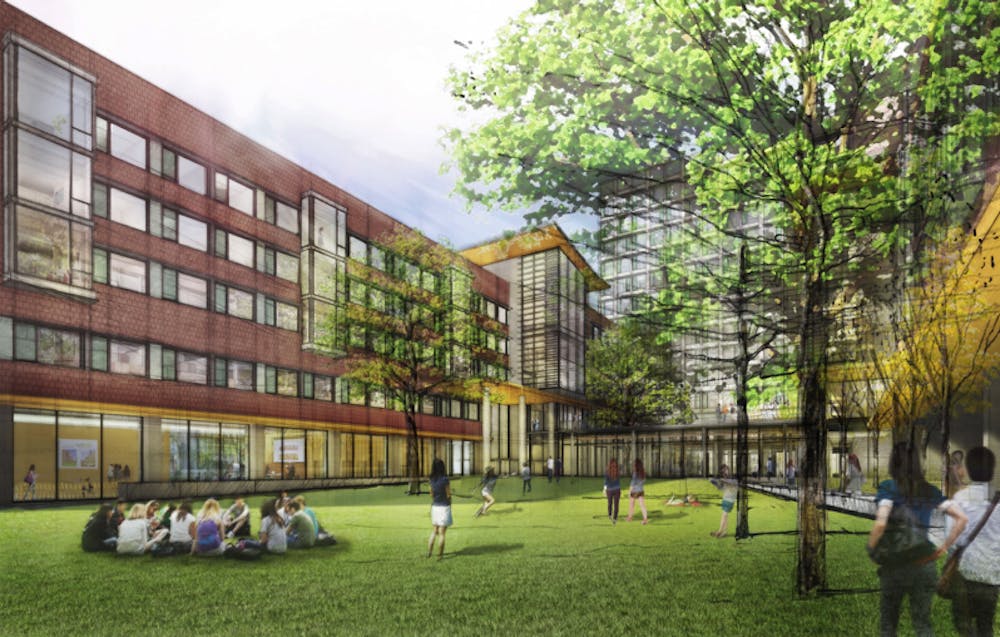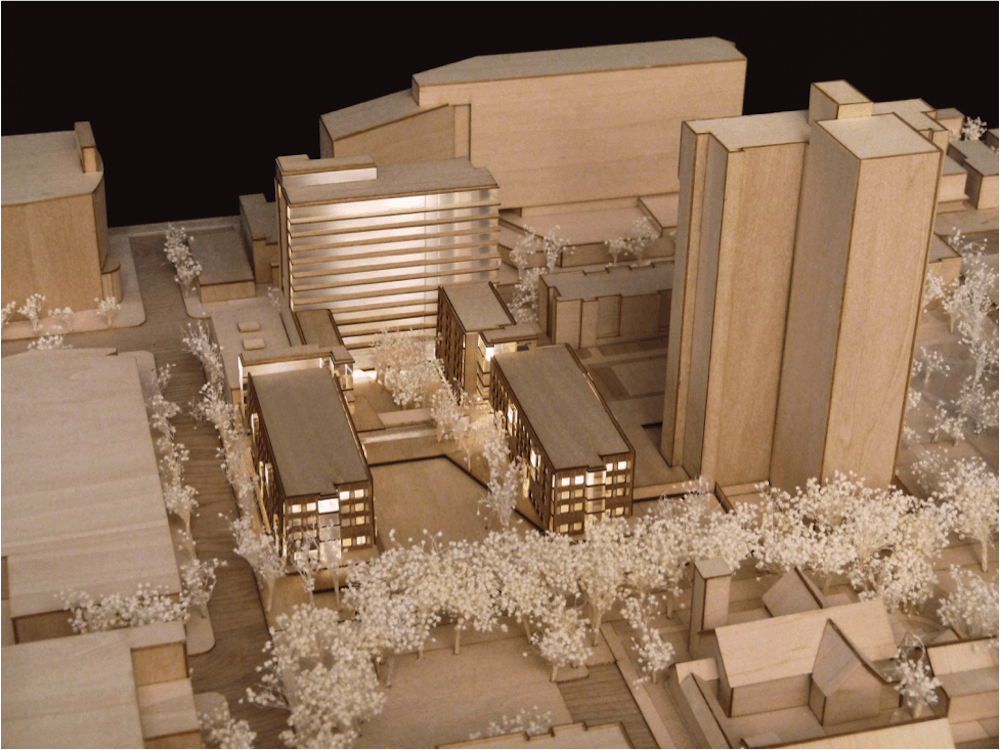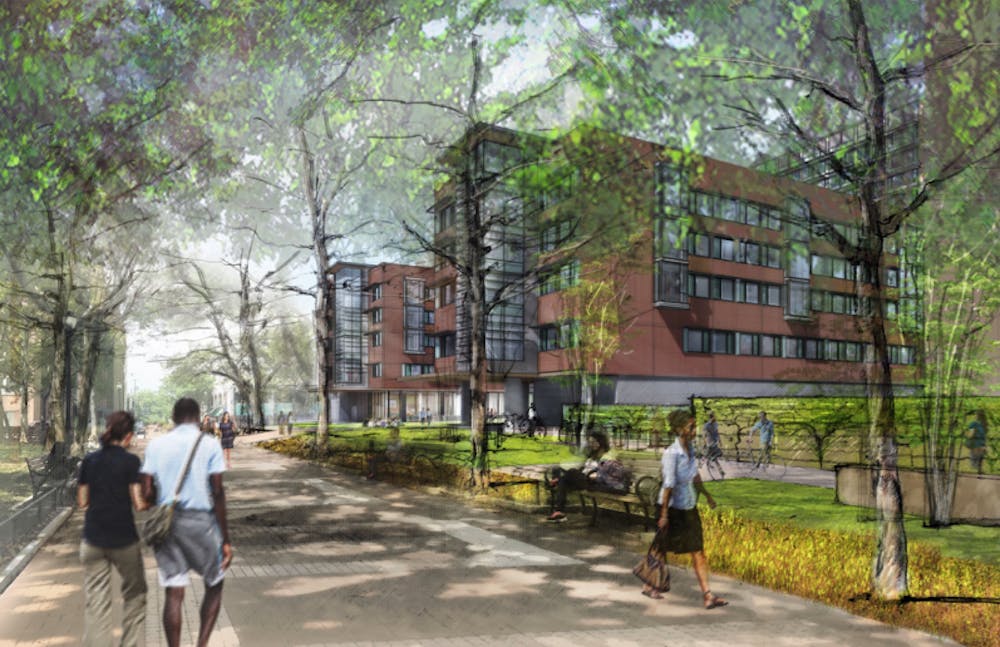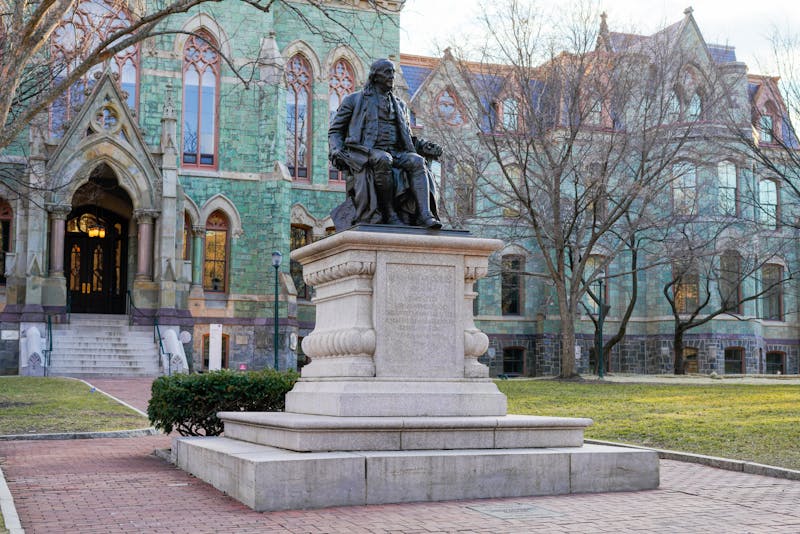
The Board of Trustees announced Thursday that plans for a new residential building on the west end of campus have been approved. But since the announcement of what Penn President Amy Gutmann has called “a signature moment to improve student life at Penn,” some students have expressed concerns that the establishment of the new residential building will demolish the few green spaces left on campus.
New College House West, a three-year, 450-bed residence for sophomores, juniors, and seniors, will be located on high rise field, which is situated near the high rises, at the intersection of 40th and Walnut streets. The record-breaking $163 million project is set to begin construction in the summer of 2018 and will open its doors to students in the fall of 2021.
College junior Daniel Kranseler said despite living off campus, he spends quite a lot of time in the high rise field playing frisbee or football.
“It’s just really frustrating when there’s not much green space on campus where you can run around, play sports, and just enjoy yourself outside,” Kranseler said. “The high rise field was one of the few spaces left, and putting a building there would put more people in a place with less green space.”
While he acknowledged that the field was “a bit underdeveloped,” Kranseler said he would prefer having the field over another large residential building.

College and Wharton sophomore Jennifer Chen, who lives in Harrison College House, said that although she does not spend much time at high rise field, she loves seeing the green space that it provides.
“I’m opposed to [the construction] for the same reason that many people are,” Chen said. “I feel like this side of campus is already really cramped and I can’t imagine another high rise right there, so close to Du Bois [College House] and Rodin [College House]. I understand that there needs to be more living space on campus, but I just don’t think they picked a good location.”
Despite student concerns, Gutmann said during the Board of Trustees meeting on Nov. 2 that the creation of the new residential building will actually result in a “net addition of green space.”
“We specifically rejected the idea of having that large college green being a private space, and made it public so that it’s open and welcoming to everybody,” Gutmann said.
Vice President for Facilities and Real Estate Services Anne Papageorge also told administrators during the meeting that the new building will make the existing field “a more useable green, not just a leftover one.”

According to a statement from the University, Penn aims to obtain a Leadership in Energy and Environmental Design Silver certification for its new project, which will retain the public green spaces adjacent to Locust Walk, north of Harrison College House, and east of Rodin, as well as the space near Gregory College House.
"These common green spaces are openly accessible to public pedestrian access and available as gathering spaces for University and community events," the statement read.
The new residential building will also provide green rooftops and a private courtyard for residents.
Penn has previously received a gold-level LEED certification for New College House, Joe’s Cafe in Steinberg-Dietrich Hall, and the Music building. Penn's climate action plan, which began in 2009, requires that all new buildings meet at least the silver standard.
In the past two years, Penn has invested $205.5 million in the construction and renovation of two residential buildings: New College House, a newly built dorm located near 34th and Chestnut streets, which first opened to students in 2016 and Hill College House, which reopened at the beginning of this semester with $80 million worth of renovations.
Gutmann said the construction of New College House West is part of an ongoing effort to ensure that more undergraduate students are able to live on campus, although many students have indicated that on-campus housing is not the most affordable option for them.
Penn's financial aid packages also seems to reflect this: Students on financial aid who live on campus can receive $9,818 per year for their housing, while students living off campus can only receive up to $8,217, suggesting that the University recognizes the relatively higher costs of living on-campus.
The Daily Pennsylvanian is an independent, student-run newspaper. Please consider making a donation to support the coverage that shapes the University. Your generosity ensures a future of strong journalism at Penn.
Donate






